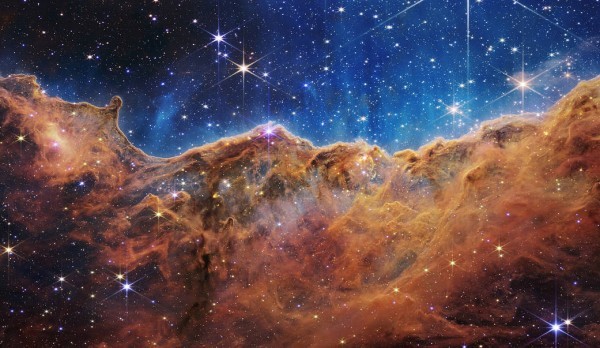Hubble just captured a cloudy dream where stars are born deep in space.
The heart of this image from the NASA/ESA Hubble Space Telescope is obscured by a small, dense cloud of gas and dust known as CB 130-3, which is a compact collection of gas and dust that is classified as a dense core.
This specific dense core appears to billow across an expanse of background stars and it hails all the way in the constellation Serpens.

Where Baby Stars Are Born
Astronomers are particularly drawn into dense cores like CB 130-3 because they are places where new stars are formed. A baby star is created when these cores collapse and accumulate enough mass to reach the temperatures and densities necessary to begin a hydrogen fusion.
Although it may not be clear from this image, CB 130-3 has a compact object that is on the verge of becoming a star, according to ESA.
To learn more about the surroundings of this young star, astronomers used Hubble's Wide Field Camera 3. The density of CB 130-3 isn't consistent, as this image demonstrates; the cloud's margins are made up merely of flimsy wisps, while its center completely blocks out background light, as noted by ESA.
Stars in the background are affected by the gas and dust that make up CB 130-3 in both terms of brightness and color, with stars closer to the cloud's center looking redder than those farther away.
Hubble was used by astronomers to quantify this reddening effect and map out the density of CB 130-3, revealing details about the interior composition of this stunning stellar nursery.
Read Also : NASA's Hubble Space Telescope Captures a Bright Star Hours After its Supernova Explosion
Webb Captures a Stellar Nursery
Who knew that the deep space could have valleys of star-forming clouds?

The newly-minted James Webb Space Telescope captured earlier this year a stellar nursery , particularly in the fringe of a neighboring, young star-producer called NGC 3324 in the Carina Nebula.
The Cosmic Cliffs are a seemingly three-dimensional sight that on a moonlit night resembles rocky mountains in the image above. According to NASA, the tallest "peaks" in the photo are the boundary of NGC 3324's vast, gaseous cavity, which is around 7 light-years high.
Related Article : NASA's Hubble Space Telescope Witnesses a Dance of Three Interacting Galaxies 200 Million Light-Years Away
This article is owned by Tech Times
Written by Jace Dela Cruz

![Apple Watch Series 10 [GPS 42mm]](https://d.techtimes.com/en/full/453899/apple-watch-series-10-gps-42mm.jpg?w=184&h=103&f=9fb3c2ea2db928c663d1d2eadbcb3e52)


